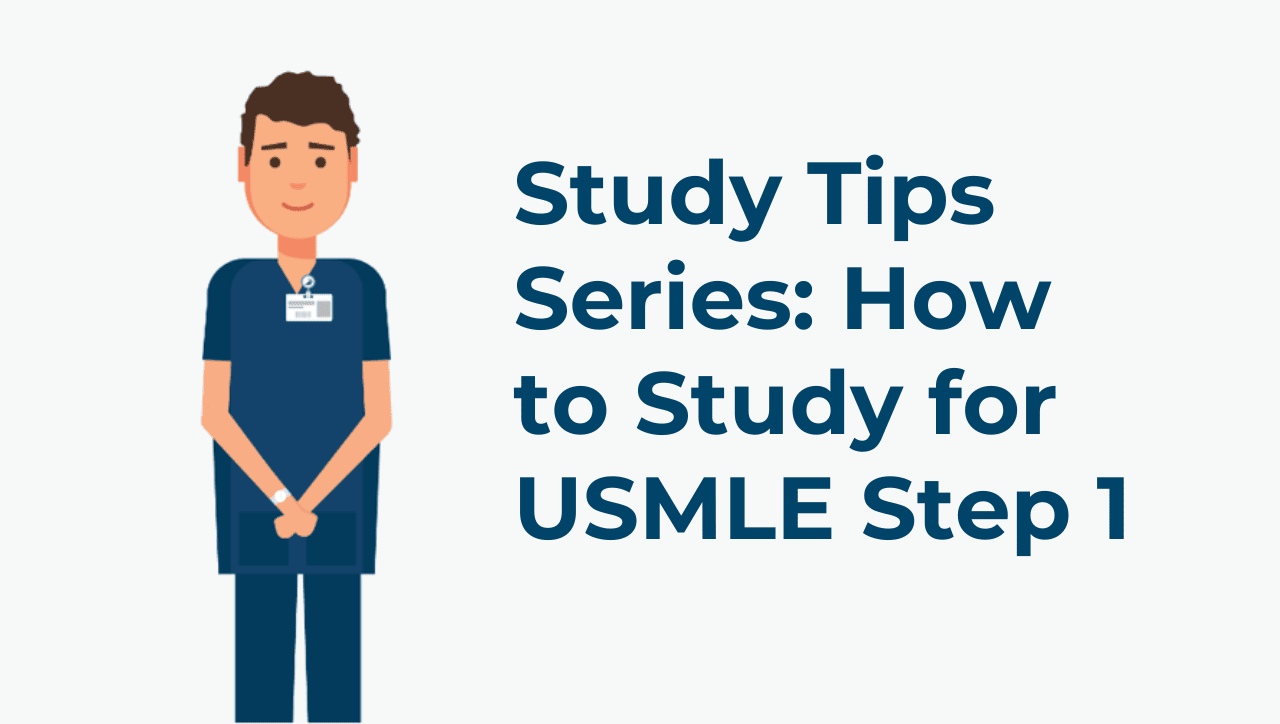USMLE Scheduling Tips For First-Time Test Takers
Taking the USMLE Step 1 is a daunting task, requiring a tremendous amount of dedication, brainpower, and perseverance. The last thing you want to worry about is a logistical issue. Here we’ve outlined eight steps that can help you with USMLE scheduling before and while preparing for Step 1.
1. Register for USMLE Step 1
First, you must log in to the NBME’s website and start the USMLE Step 1 application process. You’ll need to select an Eligibility Period, the three-month period you’d like to take the USMLE Step 1 within. You’ll also be required to select the region where you’d like to take the exam.
Next, you’ll be asked to input your medical school, contact and demographic information, and any details for requested test-taking accommodations (i.e., for students with documented disabilities: such accommodations may include wheelchair access, additional break time, and/or additional testing time). Make sure the biographical information you input matches the form of ID you’ll be bringing with you on test day. After you’ve submitted your application, you’ll wait for approval. This is just to verify your information.
2. Check the USMLE Step 1 Dates
Once your application is approved, you’ll receive an email containing information about your Scheduling Permit. With your permit, you can register for an exam date within your selected Eligibility Period. All USMLE exams are taken at Prometric testing centers; to schedule your appointment, have your Scheduling Permit ready and log in to the Prometric website.
When you log in, you can find a test center close to you and its exam appointments. Select a date that works best for you. There is no correct or incorrect time to take the USMLE Step 1, but your selection for a test date should account for several variables.
Your medical school may be structured such that dedicated study time is already incorporated into your curriculum. In this case, your best bet will be to take the exam at the end of that study period. If this is not the case, speaking to students from your institution who have already taken the exam will help you strategize.
It can be helpful and convenient to plan your test day at the same time or close to that of your study group or partner (if applicable) so that you can all work towards the same goal.
Ultimately, you want to plan a study schedule that will allow you to work at a consistent intensity and to conclude just before your test date. If you study intensely too early, it becomes very easy to burn out before exam day.
3. Prepare for USMLE Step 1 Fees and Costs
As of 2024, the USMLE Step 1 exam fee is $670. There is an additional fee if the exam is taken outside the United States or Canada, which may vary based on your region. For more information about taking Step 1 internationally or regional charges, you can contact USMLE via email at USMLEreg@nbme.org or call 215-590-9700.
If you need to change your test date 46 days or more before your scheduled date, there is no extra fee. However, if you reschedule your exam within fewer than 30 days but more than 6 days before your scheduled date, you will be charged $100. If your exam needs to be changed within 5 days of the scheduled date, the associated fee can range from $137 to $345, depending on your testing region.
4. Try a Practice Session
To familiarize yourself with the exam format and question style, check out the free practice materials at the USMLE website. Students may also register for a computer-based testing practice session at a Prometric test center, which costs $75 or $155 depending on the testing region. The computer-based testing practice is the best way to simulate test day, as it facilitates familiarization with the testing center and exam format.
You can also use high-yield USMLE Qbanks like TrueLearn to study and prepare. Mapped to the USMLE Step 1 Content Outline, it provides performance analytics and real-time benchmarking to see how you’ll do on exam day and compare your performance to others.
With a robust number of questions, you can use it to increase your chance of passing. Plus, it’s also a great tool for Step 2 CK and shelf exam prep. Try these test-taking strategies from our experts to help you pass.
5. Reschedule Step 1 if Needed
If you have to reschedule your exam date, you can do so on the Prometric website—the same way you scheduled your exam! You must provide your Prometric Confirmation Number when you change your exam appointment. To avoid a rescheduling fee, reschedule your exam for at least 46 days or more before your exam.
If something comes up and you have to reschedule sooner, be prepared to pay a fee. The date and local time for the testing center you choose to take your exam will determine your fee and whether or not you’ll pay it.
6. Save Step 1 Testing Center Information
Your testing center information such as the location, policies, and other details can be found on the Prometric website. Log in and navigate to your appointment. There, you’ll find the important testing center information you need. Be sure to look at this information well in advance and a day before your exam.
7. Review Day of Step 1 Exam Schedule
Re-review your testing center codes of conduct. You should arrive at least 30 minutes before your scheduled exam time to allow time for checking in and going through security protocols.
Bring a paper or electronic copy of your Scheduling Permit; you’ll also need an unexpired government-issued ID with photo identification.
The USMLE Step 1 consists of seven 60-minute blocks and is administered throughout an eight-hour testing session. The maximum number of questions per block and for the entirety of the exam are 40 and 280, respectively.
You’ll have a total of 45 minutes for breaks on exam day. This designated break time can be allocated however you’d like: whether that means a short break after each block, one long break in the middle of the exam, or another permutation is up to you. Any time saved during a block can be “banked” for additional breaks above the 45 minutes available at the start of your exam. Note, however, that you cannot take a break in the middle of a block. You can even go straight through without taking breaks, but this is not advised.
8. What to Do If You Need to Retake the Exam
If you fail the exam, you are allowed to retake the USMLE Step 1 up to three times within a year. Your fourth attempt must be at least 12 months after your first attempt at that exam and at least 6 months after your most recent attempt.
If you’ve attempted the exam four times (either failed or incomplete), you will no longer be able to take the exam.
If you pass the USMLE Step 1 exam, it cannot be retaken. The exam is pass or fail, so there’s no need to worry about a numerical score.


